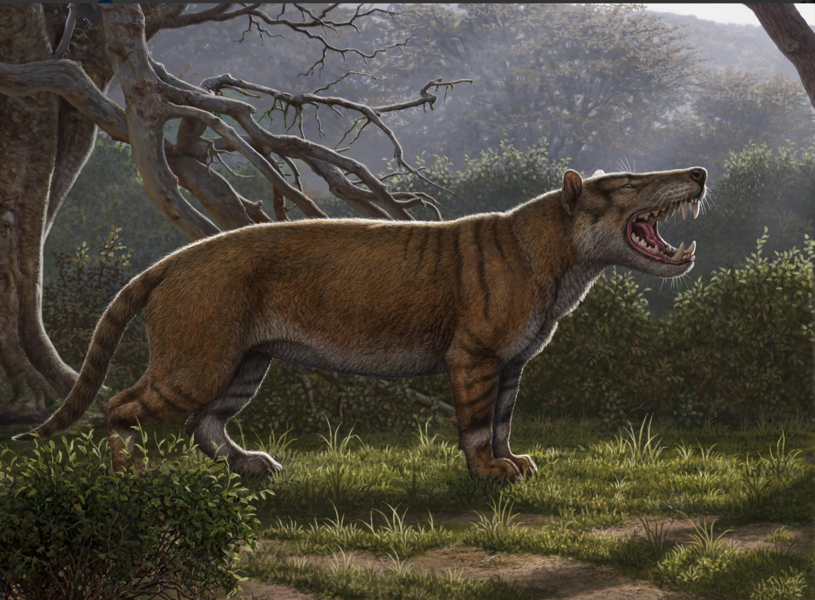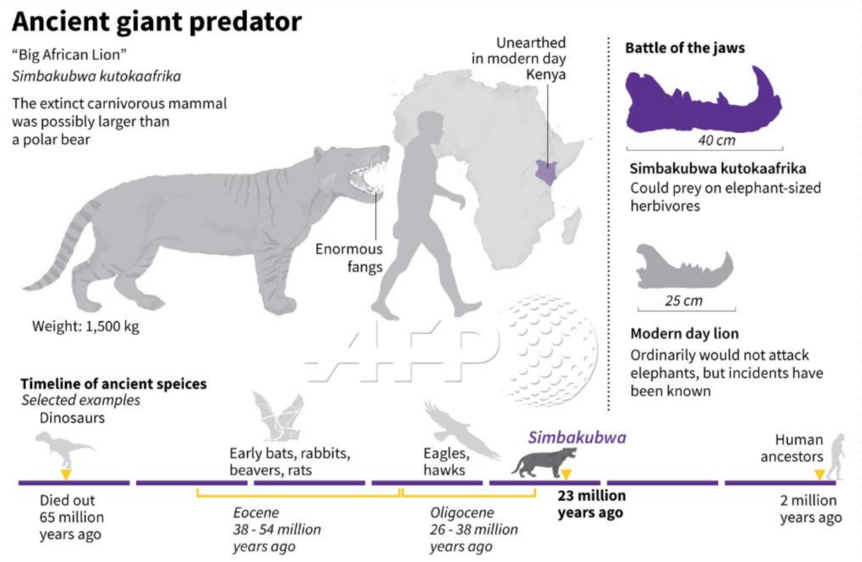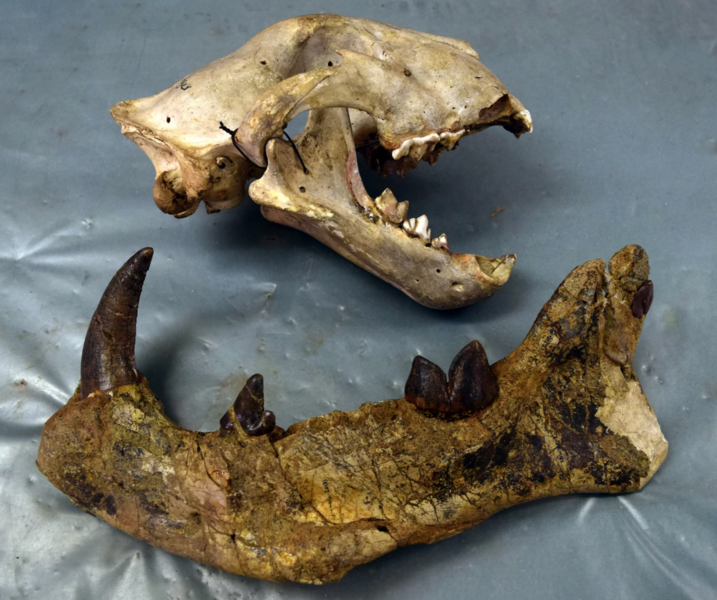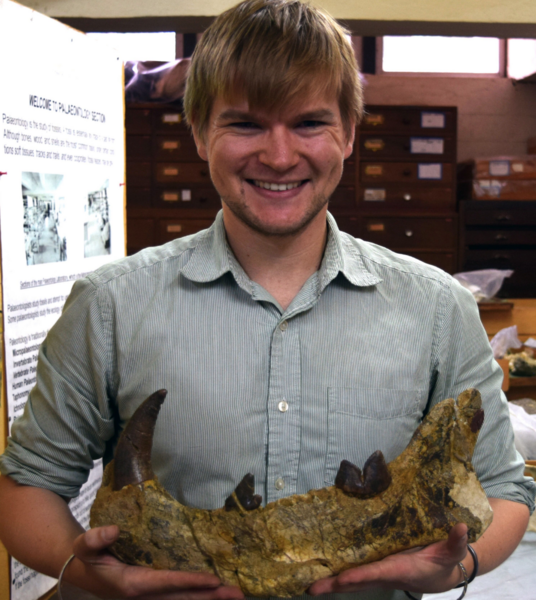Create a free profile to get unlimited access to exclusive videos, sweepstakes, and more!
Fearsome prehistoric ‘Warg’ beast is something straight out of Lord of the Rings
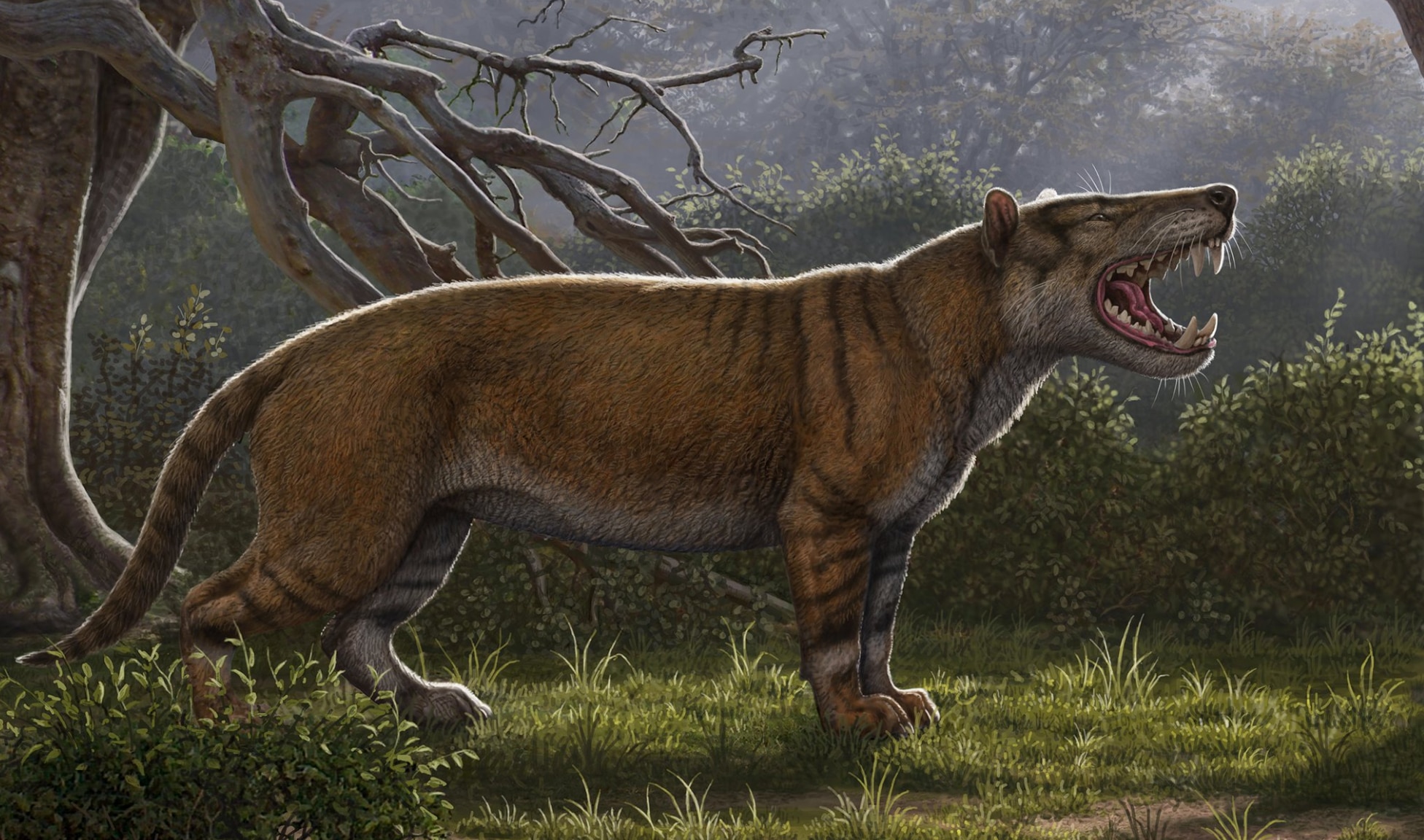
What's more frightening than the bristle-haired Warg beasts that Orc warriors favored as their battle mounts in J.R.R. Tolkien's The Lord of The Rings? How about the fact that savage carnivores similar to those toothy predators in the dark fantasy trilogy actual roamed the hot African plains millions of years ago?
According to a new study published online April 18 in the Journal of Vertebrate Paleontology, this recently discovered hypercarnivore, named Simbakubwa, existed nearly 22 million years ago in what is now considered the country of Kenya. The intimidating beast was similar in size to a male lion and larger than a woolly polar bear, which is catalogued as the biggest land-based meat eater alive today. It tipped the scales at a hefty 3,300 lbs, measured 8 feet long from fanged snout to stabilizing tail, and stood 4 feet tall at its shoulders.
Researchers are naming the newfound flesh-consumer Simbakubwa kutokaafrika, Swahili for "big lion from Africa."
"But it was much larger than a modern lion," study co-researcher Matt Borths, curator of the Division of Fossil Primates at the Duke Lemur Center in North Carolina, told Live Science. "Compared to modern carnivorous mammals, its head would have looked a little too big for its body, like a very toothy Funko Pop figure."
Borths' fortuitous discovery of the assorted jawbone, skull, and skeleton fossil remains played out in a museum drawer at the Nairobi National Museum, where he was doing research work on the evolution of hyaenodonts, a category of long-gone carnivorous mammals that thrived in Africa, Eurasia, and North America during the Miocene epoch. The most stunning element of Simbakubwa is the sheer size of the specimen. Based on its massive dental arrangement, the creature was considerably larger than any modern-age African terrestrial carnivore.
Dr. Nancy Stevens, a professor of functional morphology and vertebrate paleontology at Ohio University, is co-author of the study and was contacted by Borths while she was investigating fossils from Meswa Bridge, Kenya, the site where S. kutokaafrika's ancient remains were originally located. The research document published this week goes into great detail describing the dental and postcranial material from Simbakubwa kutokaafrika, thought to be the most complete hyainailourine specimen known from sub-Saharan Africa.
"Figuring out Simbakubwa was a long haul," Borths tells SYFY WIRE. "Just sorting out where it fit in its family tree required a dissertation of work, traveling to museums around the world to figure out the anatomy and evolution of these things. To make this study possible, that data was combined with Dr. Stevens' decades of experience studying ancient African ecosystems and the incredible work of the National Museums of Kenya, who protected the fossil and made it accessible to researchers.
"This study is the culmination of a six-year slog for me, a decade-long effort by Dr. Stevens, and decades of curation work by the museum," he adds. "Whew. I think it was worth it, though."
This impressive discovery could shed light on how supersized apex predators and prey evolved and migrated over millions of years near the end of the Paleogene epoch.
Here, kitty kitty! What do you think of this ominous prehistoric lion, and would you strap a saddle on it for a heart-pumping paleo gallop across the savannah?
